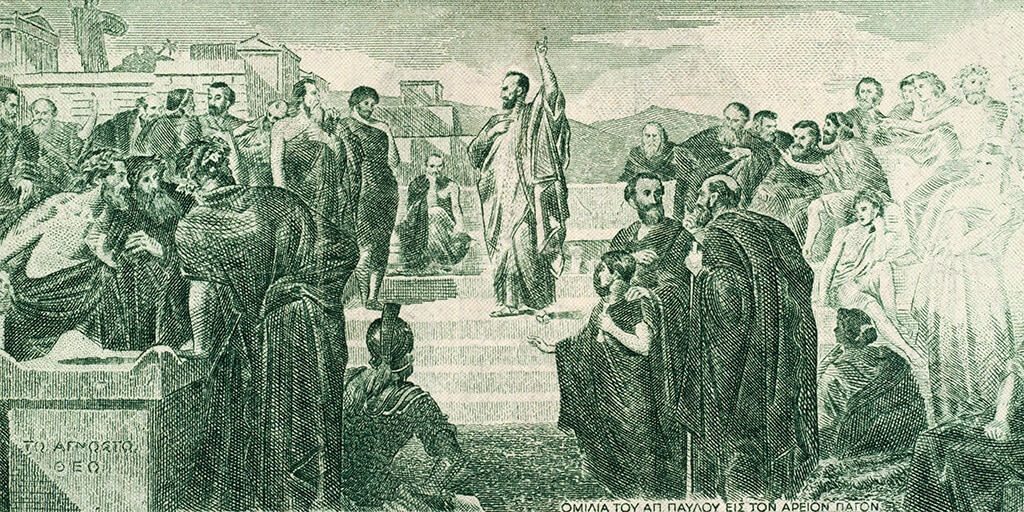The Apostle Paul Explains the Gospel

Is there any eyewitness testimony that the early Christians saw Jesus alive after He was killed by crucifixion, buried in a tomb, and then arose from the dead and appeared to His disciples? We will begin with the information from the apostle Paul’s own writings in 1 Corinthians 15. These words have become the consensus position among scholarship today that this evidence about Jesus was written down and in circulation among Christians within at least two years, or possibly even a few weeks or months, after Jesus’ crucifixion. In 1 Corinthians 15, The Apostle Paul wrote:
“Now I make known to you, brethren, the gospel which I preached to you, which also you received, in which also you stand, by which also you are saved, if you hold fast the word which I preached to you, unless you believed in vain.
“For I delivered to you as of first importance what I also received, that Christ died for our sins according to the Scriptures, and that He was buried, and that He was raised on the third day according to the Scriptures, and that He appeared to Cephas, then to the twelve. After that He appeared to more than five hundred brethren at one time, most of whom remain until now, but some have fallen asleep; then He appeared to James, then to all the apostles; and last of all, as to one untimely born, He appeared to me also.”
Dr. Habermas explains why these words have been accepted by almost all critical scholars:
Dr. Gary Habermas: One of the most important pieces of data that the critical community will almost unanimously admit is 1 Corinthians 15. Now, in the first two verses Paul has just said, “I came to you [Corinthians]. I preached to you the gospel.” That’s when he came there in person and preached orally. We’re talking about 51 AD. And he said, “I preached the words of the gospel. And if you believe those, you’re saved; and if you’re not believing them, you’re not.”
And then he reads or states for them what the gospel is. He says, verse 3: “For what I received, I passed on to you as of first importance: that Christ died for our sins according to the Scriptures, that He was buried, that He was raised on the third day according to the Scriptures, and that He appeared to Peter and then to the twelve.” And then he lists some other appearances. And he says, “Last of all, He appeared to me.” So this is one of the clearest, if not the very clearest, accounts of the nature of the gospel in the New Testament.
Now, why is this taken so seriously? First of all, it’s in a book that is unanimously thought to be written by the apostle Paul. Why is that? Well, as one scholar said, we don’t even need to discuss Pauline authorship here; the internal and external evidence is so strong. Well, like what? You know, by 100 AD—just before 100, Clement, 95 AD; just after 100, Polycarp about 107; Ignatius about 110—those three men, writing nine short epistles, that is an incredible amount of attestation from sources outside of Paul to the authority of Paul.
That’s just one of the many reasons people will admit, even skeptics, that Paul, as an apostle, believed he saw the risen Jesus. And so when he said, “Christ died for our sins according to the Scriptures, was buried, and rose again the third day,” we have to take him seriously for this reason: it’s unanimously admitted, or virtually so, that Paul at least believed that he saw the risen Jesus. And that makes all the difference in the world.
So you’re dealing with somebody who was there at the beginning, who knows the other apostles, who’s repeating the gospel they all taught. 1 Corinthians 15:11, he says, “Whether it is I who am preaching, they who are preaching, it makes no difference. We’re preaching the same gospel.” Paul took great care—and we’re told about this in Galatians 1 and 2—he took great care to ascertain that this is the same gospel the disciples were preaching.
C. H. Dodd says this. He said, “Paul’s rendition of the gospel is very, very close to Jesus Christ.” He said, “It’s the stream that is very close to the main river.” He said, “Anybody who wants to argue otherwise has to defend and bear the burden of proof for their thesis.” Paul has given us the account right there at the river’s mouth.
Ed. Note: This article has been excerpted from our series, “Evidence for the Historical Jesus,” and has been slightly edited for publication.









We’re t the disciples preaching the gospel of the kingdom? Faith baptism works endure to the end?